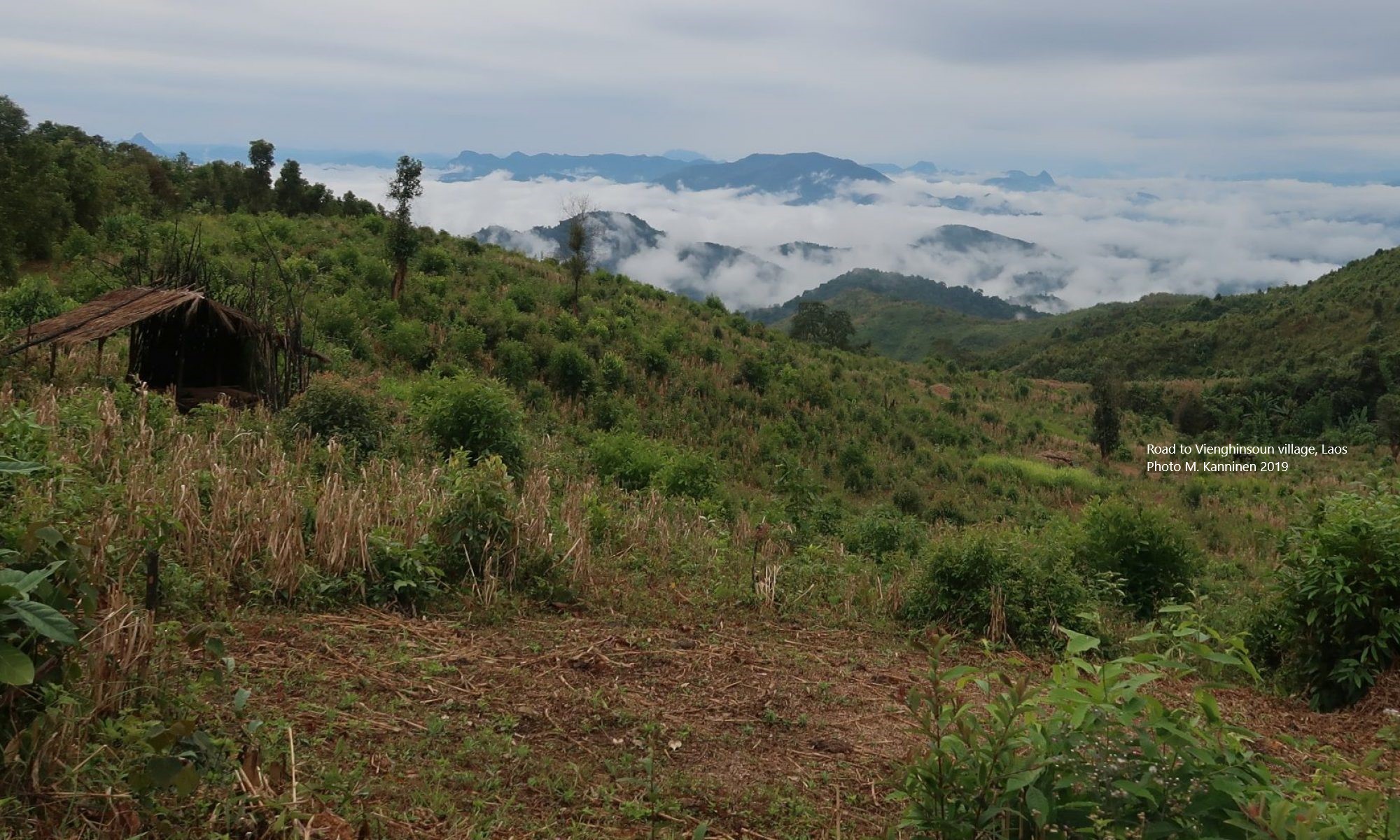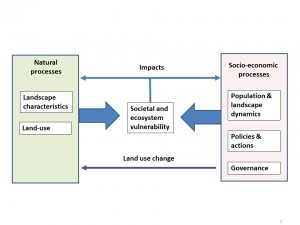Environmental vulnerability, social resilience and multi-scale governance (ENV-GOV) (2015-2017)
Background
The 2014 report of the Intergovernmental Panel on Climate Change states that the loss of life and economic assets from both coastal and inland flooding represent the two major climate-related risks in the future in developed as well as in the developing world. Furthermore, environmental risks and vulnerabilities related to rapid land-uses changes require innovative strategies for environmental governance and social resilience. While the importance of resilience and responsible governance has been emphasised in policy agendas, careful analyses of multifaceted links between ecological and social processes related to global environmental change are scarce.
Research objectives and research approaches
In this project, we analyze environmental vulnerability and social resilience in the context of land-use changes and what are their impacts on water-related vulnerabilities through floods, droughts, water contamination and other kinds of risks (Figure 1). The research objectives are the following:
- Evaluate current and future vulnerabilities of selected societies to environmental change
- Understand diverse governance structures and processes that have emerged in different ecological and socio-cultural contexts as a result of global environmental change
- Identify promising governance initiatives and facilitate them towards social innovations
Figure 1. Components of vulnerability and natural and socio-economic processes impacts on vulnerability (click the graph to enlarge).
The project examines the multi-scale forms of environmental governance, paying special attention to the diversity of actors with their different access to knowledge and power. The research seeks to reformulate conventional approaches to governance: First, by broadening the analytical framework within which diverse modes of governance are linked together. Second, by developing approaches, which carefully consider the ecological, political-economic and socio-cultural processes that shape people’s vulnerability to environmental risks and their ability to cope with them.
The research analyses multi-scale governance in three big watershed areas: 1) Grijalva-Usumacinta in Mexico, Latin America, 2) Mekong area in Laos, SE Asia and 3) Vantaanjoki in Finland, Europe. These cases offer a good combination of socio-spatial diversity relevant for gaining insights into environmental governance structures and practices. Empirical analyses that carefully link the local regimes of water governance and the local experiences of vulnerability to multi-scale governance structures are scarce.
Research methods
The methodological framework of the research consists of the following components:
- Assessment of current vulnerability and its drivers in the three case study areas.
- Participatory scenario workshops to examine the future vulnerability in each area through an analysis of the changes in the land use and their bio-physical and socio-economic drivers.
- Analysis to define governance initiatives that could lead into improved social resilience.
Through different case studies, we seek to identify similarities and differences in environmental vulnerabilities and their governance in different social-geographical contexts. The research will use methods that integrate macro-, meso- and micro-scale data, and combine quantitative analyses of multi-scale risk scenarios and vulnerability assessments with qualitative approaches of political ecology and engaged ethnography.
Publications
Räsänen, A., Juhola, S., Nygren, A., Kallio, M., Monge, A.M., Käkönen, M., Kanninen, M. 2016. Climate change, multiple stressors and human vulnerability – a systematic review. Regional Environmental Change
Räsänen, A., Juhola, S., Monge Monge, A., Käkönen, M., Kanninen, M. & Nygren, A. 2017. Identifying mismatches between institutional perceptions of water-related risk drivers and water management strategies in three river basin areas. Journal of Hydrology 550: 704–715.
Räsänen, A., Nygren, A., Monge Monge, A., Käkönen, M., Kanninen, M., Juhola, S. 2018. From divide to nexus: Interconnected land use and water governance changes shaping risks related to water. Applied Geography 90, 106-114
Wider significance
The project will contribute to new knowledge of human-environmental interactions and nature-society relationships relevant for better understanding of multi-scale governance. It will employ interdisciplinary approaches with innovative cross-fertilizations between natural and social sciences. The project will promote synergic learning among researchers, decision-makers, development practitioners, activists, and local resource-users between the global North and South.
Project information
Countries: Finland, Lao PDR, and Mexico
Duration: 1.1.2015-31.12.2016
Project leader in VITRI: Prof. Markku Kanninen
Funding: Helsinki University Centre for Environment, HENVI, University of Helsinki
More information on ENGOV
Project leader Anja Nygren
Development Studies, Political and Economic Studies
Sub-project leaders:
Markku Kanninen, Viikki Tropical Resources Institute,
Sirkku Juhola, Environmental Sciences

